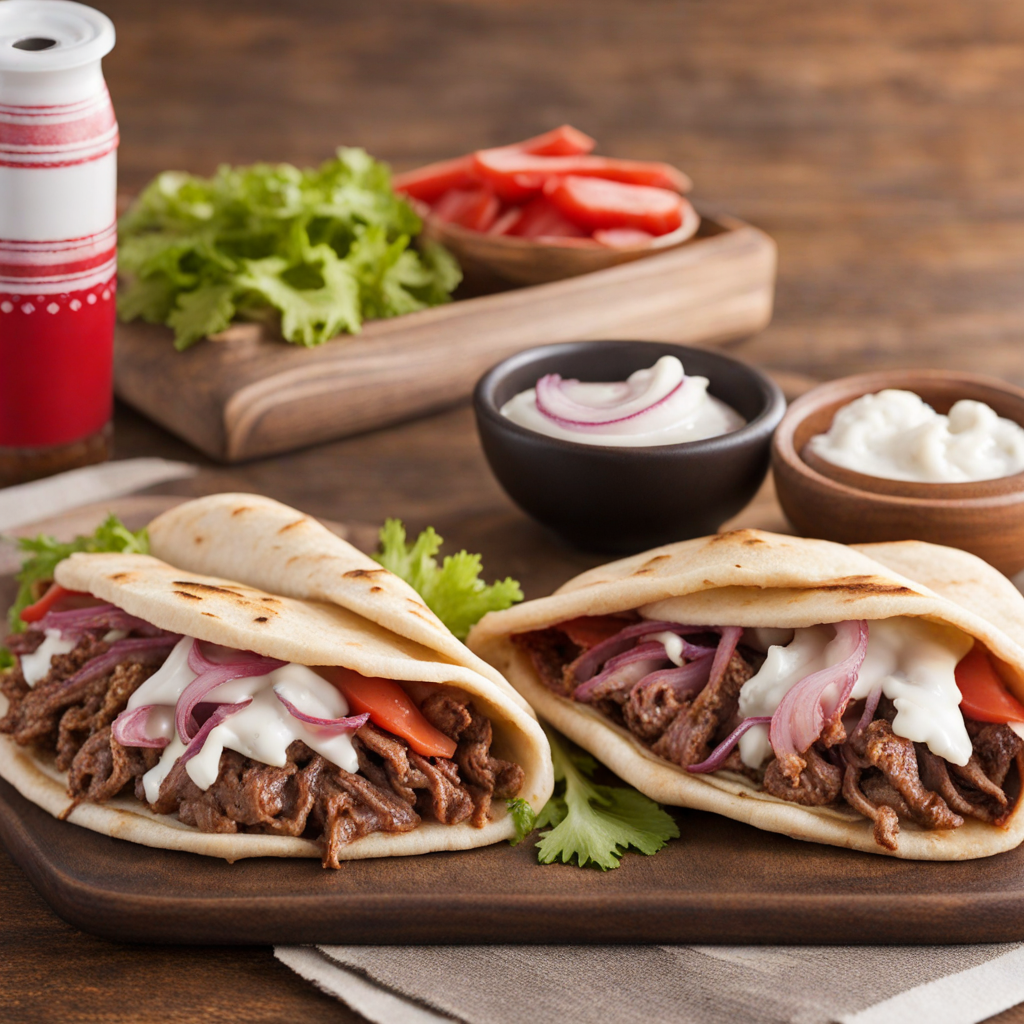Peameal Bacon
Peameal bacon, often referred to as "Canadian bacon," is a unique and flavorful delicacy that hails from Canada. This pork product is made from the lean back cuts of the pig, particularly the loin, which is then cured in a brine and rolled in cornmeal, giving it its distinctive yellow crust. The name "peameal" originates from the historical practice of using ground yellow peas to coat the meat, although cornmeal has become the more common coating today. This preparation method results in a tender, juicy slice of meat that is low in fat compared to traditional bacon, making it a popular choice for those seeking a leaner alternative. When cooked, peameal bacon develops a delightful golden crust while remaining moist and succulent inside. Its flavor profile is milder than that of regular bacon, with a slightly sweet and savory taste that pairs beautifully with a variety of dishes. It is often served in breakfast settings, typically alongside eggs and toast, or as part of a classic Canadian brunch. Peameal bacon can also be used in sandwiches, adding a delicious twist to the traditional BLT or as a hearty filling in a breakfast wrap. The versatility of peameal bacon is one of its many charms, making it an exciting ingredient to experiment with in the kitchen. For the adventurous eater, peameal bacon offers a taste experience that is both comforting and intriguing. Whether enjoyed as part of a hearty breakfast, incorporated into a savory dish, or simply savored on its own, this iconic Canadian food is sure to leave a lasting impression. With its rich history and delightful flavor, peameal bacon invites culinary enthusiasts to explore the unique tastes of Canada and expand their palate.
How It Became This Dish
The History of Bacon de Lard: A Culinary Delight from Canada Bacon de lard, a term that evokes images of rich, smoky flavors wrapped in the warmth of tradition, is a quintessential Canadian delicacy that traces its origins back to the early days of the country’s colonization. This unique type of bacon, distinct from its more commonly known counterparts, has a rich and layered history that reflects the cultural tapestry of Canada. #### Origins The origins of bacon de lard can be traced back to the French settlers who arrived in Canada during the 17th century. These early colonizers brought with them not only their language and customs but also their culinary traditions. Among these was the art of curing pork, which was essential for preserving meat in the harsh Canadian winters. Pork was a readily available source of protein, and the settlers quickly learned to adapt their methods of preservation to the new environment. The combination of salt, sugar, and spices traditionally used in France was adapted to include local ingredients, creating a unique flavor profile that would come to define bacon de lard. The process often involved salting the pork belly and allowing it to cure for several weeks, after which it was smoked over hardwood fires to impart a distinct flavor. #### Cultural Significance Bacon de lard holds a special place in the hearts of many Canadians, particularly in the province of Quebec, where it is often associated with traditional French Canadian cuisine. It is a staple in dishes such as poutine and tourtière, as well as a beloved breakfast item. The cultural significance of bacon de lard is tied to notions of rustic comfort food, evoking memories of family gatherings and community celebrations. Furthermore, bacon de lard is emblematic of the broader Canadian identity, which is characterized by a fusion of indigenous and European culinary practices. The blending of these traditions is evident in the use of local ingredients, such as maple syrup, which is sometimes incorporated into the curing process, adding a distinctive sweetness that enhances the flavor of the bacon. #### Development Over Time As Canada evolved, so too did bacon de lard. In the 19th century, with the advent of industrialization and urbanization, the production of bacon became more commercialized. Curing techniques improved with advancements in technology, allowing for mass production. However, artisanal methods remained cherished, particularly among local producers who continued to craft bacon de lard using time-honored techniques. During the 20th century, the popularity of bacon de lard began to spread beyond Quebec. As Canadian culture became increasingly interconnected with global influences, bacon de lard found its way into various culinary contexts. Chefs around the country began to experiment with the ingredient, incorporating it into contemporary dishes and elevating it to gourmet status. This led to an increased appreciation for the product and a resurgence of interest in traditional curing methods. In the 21st century, bacon de lard experienced a renaissance, fueled by the farm-to-table movement and a growing interest in artisanal foods. Consumers became more aware of the origins of their food and began to seek out local producers who emphasized sustainable practices. This shift in consumer behavior not only revitalized the bacon de lard market but also strengthened bonds within local communities. The development of bacon de lard has also been influenced by the rise of food media and social platforms. Chefs and home cooks alike began sharing their recipes and techniques online, creating a sense of community around the love of this delicious product. Food blogs, Instagram, and cooking shows have helped to popularize bacon de lard beyond its traditional boundaries, introducing it to a new generation of food enthusiasts. #### Modern Interpretations Today, bacon de lard is celebrated in various forms across Canada. It can be found in gourmet restaurants, local farmers’ markets, and even in home kitchens. Innovative recipes have emerged, showcasing bacon de lard in everything from savory pastries to decadent desserts. The versatility of this cured meat has allowed it to transcend its traditional role as a breakfast item, making it a sought-after ingredient in diverse culinary applications. Moreover, the rise of food tourism has contributed to the popularity of bacon de lard. Travelers seeking authentic Canadian experiences often look to local delicacies, and bacon de lard is frequently featured in food tours and culinary festivals. Events celebrating Quebecois cuisine often showcase bacon de lard, allowing visitors to appreciate its rich history and flavor. #### Conclusion Bacon de lard is more than just a delicious food item; it is a symbol of Canada’s rich culinary heritage. Rooted in the traditions of early French settlers and infused with local flavors, it embodies the spirit of community, sustainability, and innovation. As it continues to evolve and adapt to modern palates, bacon de lard remains a cherished part of Canadian identity, bridging the past with the present and inviting everyone to savor its smoky goodness. In this way, bacon de lard represents not only the culinary history of Canada but also the ongoing story of its people and their connection to the land. As consumers become increasingly interested in the origins of their food, bacon de lard stands as a testament to the importance of tradition, craftsmanship, and the joy of eating together. Whether enjoyed in a classic dish or a modern creation, bacon de lard will continue to be a beloved staple of Canadian cuisine for generations to come.
You may like
Discover local flavors from Canada







